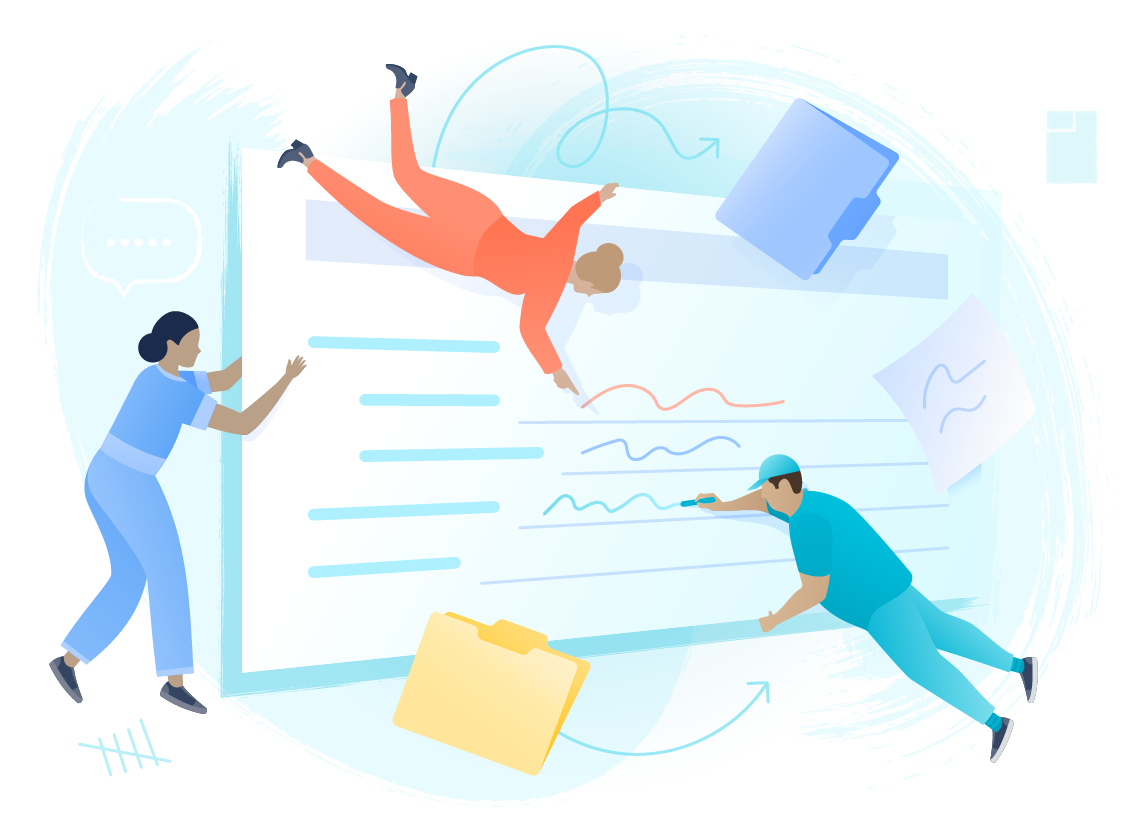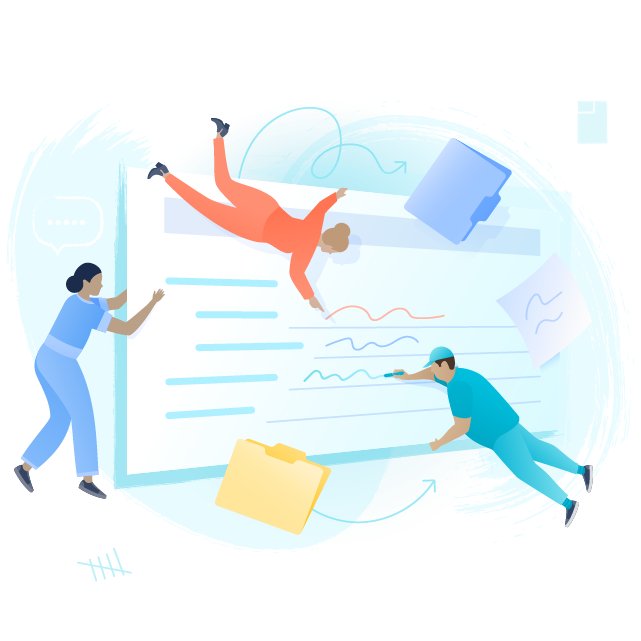Project Poster in action
What you'll need
Remote
Laptop
Video conference tool
In-Person
Laptop
Large screen or projector
Optional templates
Atlassian Templates
What is a Project Poster?
A Project Poster is a project planning tool that allows your team to think through the problem you’re trying to solve, the possible solutions, and what the ideal end result of your project will be. A project poster isn’t something you do all at once. Instead, it’s a document that will serve as a project overview, and you’ll update it as you progress. Don’t take the name ‘project poster’ too literally – you don’t have to hang it up on your wall. It should, however, be highly visible and readily available for reference, like a real-life poster would.
Running the play
Unlike project charters, your project poster is a living document. Update it as you explore your problem space, challenge assumptions, validate solutions, gather feedback, and course-correct before you move forward.
Instructions for running this Play
1. Prep
The poster is split into 3 parts to support the evolution of your project:
Problem space – Explain why solving this problem matters to customers and to the business. Get clear on your project goals and possible solutions.
Validate assumptions – Identify knowledge gaps and risks. What do you know and what do you need to find out?
Get ready to execute – Visualize the solution, and put a project plan into place.
Project posters get filled out over the course of several sessions with your team, so don't worry about doing it all in one go. In the first session, focus on defining the problem and setting your project goals. Then share it with your project sponsors as early as possible to get their feedback, which you'll incorporate in future sessions as your project develops.
HOW TO RUN EACH SESSION
Schedule 60 minutes with your team. Collect and share relevant information in advance (e.g., notes from user testing, analytics, customer feedback, market research, etc.).
Start the first session by sharing the project poster template with instructions. In future sessions, you can start by (briefly!) reviewing what's changed on the poster.
Lead your team through the questions, making sure you're basically agreed on each one before moving on to the next. If you reach a stalemate or team members have wildly different ideas, take the time to talk through them and try to reach a consensus. If you can't, someone from the team should take on a follow-up task to gather more information and share it with the whole team.
Ultimately, the project's full-time owner (i.e., project manager) or executive sponsor may have to resolve differences of opinion by simply making a call on which direction to go.
If you’re working remotely with a large team, consider creating breakout rooms or hosting multiple kick-off meetings with smaller groups, so that everyone has a chance to contribute and make their voice heard.
As you work through each section, link off to other project artifacts that come out of other plays you might run: DACI, Experience Canvas, Trade-offs, etc.
PRO TIP:
Project posters are best for when you’re solving complex problems or seizing an opportunity with a lot of unknowns. Don’t bother creating a poster for small projects.
2. Problem space
The "Problem space" section captures the project's reason for existence. This section should include just enough detail that someone outside your team can understand why you're considering this undertaking and what your project goals are.
This section is called the “Problem space,” but you’ll want to lay out the potential solutions to that problem here, too.
You'll probably revisit your problem space several times before you're ready to execute. As feedback from sponsors and stakeholders comes in, teams often find they haven’t been asking the right questions or haven’t met the customer’s needs. You might also find that your assumptions weren’t exactly spot-on.
The more feedback you can get on your problem space, the better. Ask stakeholders, higher-ups, and anyone else you think has good insights to leave comments directly in your project poster’s Confluence document. This way, you’ll have all their thoughts in one place, and will have a written record to check back on as you progress.
Don’t stress. Frequently updating and changing your project poster’s problem section is normal. Come back to this section of the project poster and work through the questions again. (And again, and again, if that’s what it takes). Likewise, the potential solutions your team comes up with will probably change as you workshop your central problem.
3. Validation
Defining the problem space will force you to make assumptions that need to be validated so that your team and sponsors are confident in your solution. Initially, this section of the poster amounts to a to-do list. As the project moves along and you record your findings here, it provides an overview of your validation efforts, and the information you've gathered.
Your research should confirm (or disprove) the potential solution and its relative priority before you go any further. If you can't do this, you may need to revisit the problem space or brainstorm more solutions to consider. Don't get discouraged – for massive projects, it can take weeks, or even months, to work through.
As your research progresses, update this section with summaries of what you've found and links to supporting documentation.
4. Ready to go
This section will be empty when you first create the project poster, but you'll fill it in as you reach conclusions around which solution to pursue, an idealized vision of what you'll deliver, and what it'll take to deliver it.
This section is where your project plan will come into focus. Involving multiple team members with diverse skill sets in the "ready to go" phase helps ensure you capture all aspects of what you'll deliver and develop that all-important shared understanding.
Make sure your completed (or semi-completed) project poster is stored in a central location, and that it’s easily accessible to everyone on your team as you get to work. This document is your project’s guiding light, so make sure everyone can see it!
PRO TIP
After the session, share your lessons learned with as many peers, colleagues, and friends as possible. Ask them what they learned, too. It's the gift that keeps on giving!
FOR EXAMPLE...
Check out a project poster created by the Confluence team.
Follow-up
If your project poster isn't complete at the end of the session, schedule a follow-up session with your team to keep working on it. Also be sure to re-group with your team after you get significant pieces of feedback from stakeholders. Depending on the size of your project, the number of project goals you have, or the amount of stakeholders who need to give feedback to your team, you may have to schedule several follow-up sessions. That’s totally OK, it’s more important to get things done right than to get them done quickly.
Variations
Leadership teams
You're solving broader problems with bigger project goals and longer time horizons. And once you land on an approach, more people are involved in the execution. Because you're working out which problems you'll prioritize solving, leadership Project Posters are strategic or visionary, rather than the more tactical posters a project team might build. Aim to keep things more “big picture” here to avoid getting lost in the weeds.
Run this play as a part of an annual planning cycle or offsite and allow 1.5 - 2 hours. Do some of the research beforehand as individuals so that you can build out more of your project poster during the session. Share your poster with the entire organization as a 12-month strategy document.
Related Plays
Stay up to date
Get the latest Plays and work life advice when you sign up for our newsletter.



